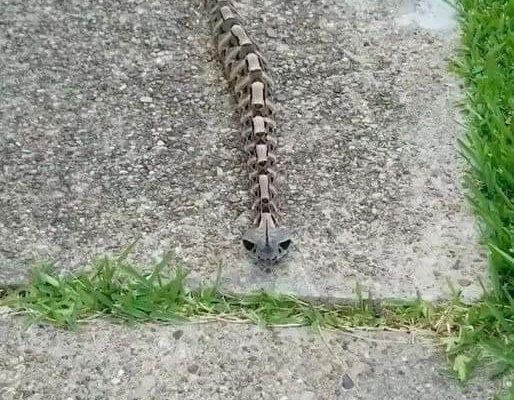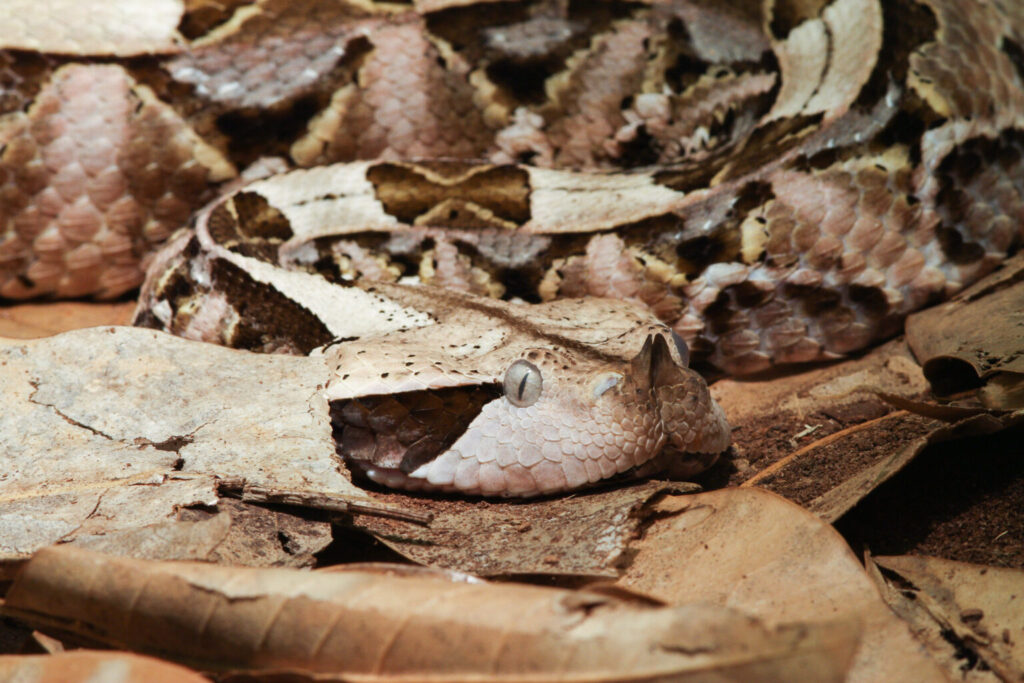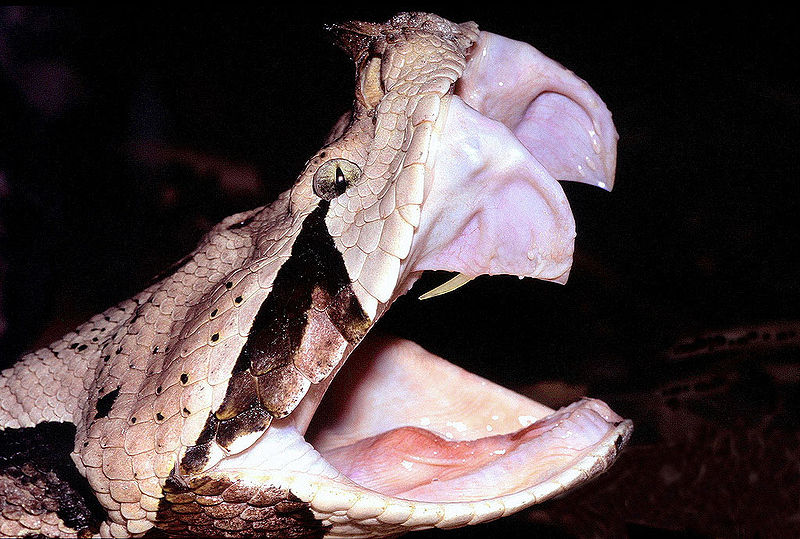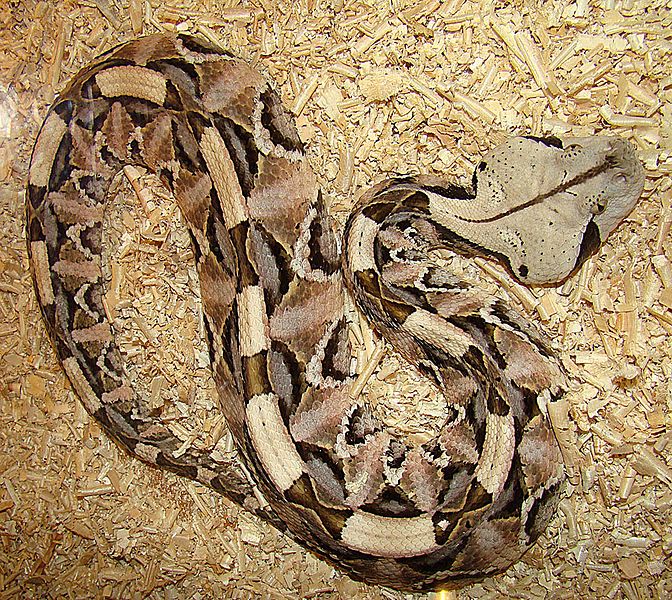Although I’ve always held a somewhat irrational fear of snakes, I count myself quite lucky to live in a region where deadly snakes are uncommon.
Despite this, I find these creatures immensely fascinating, and my occasional forays into the area of the world’s most hazardous reptiles are accompanied by equal parts terror and curiosity.
The Gaboon Viper is a natural wonder that lives in the thick of the African rainforests.
This fascinating snake captivates with its unrivaled disguise, venom, and hunting prowess.
Today, we explore the fascinating realm of this singular creature, learning the backstory of its remarkable characteristics and its reign as one of Africa’s most deadly predators…
The Gaboon adder, or Gaboon viper, is one of the largest and deadliest snakes native to Africa.
Originating in the Central and West African rainforests and dry savannas, this elusive serpent is a genuine master of disguise thanks to its brilliant and complex camouflage.
Only the largest King Cobras, which may reach lengths of 6 feet or more and weigh more than 20 pounds, are heavier.
Even more disturbing is the fact that this snake has fangs that, at up to 2 inches in length, are the longest of any venomous snake in the world.
The Gaboon Viper has one of the most lethal venom attacks of any snake on the planet.
Its venom is a lethal combination of enzymes and poisons that can destroy tissue and cause unbearable pain and, if left untreated, death.
Despite its massive triangular head, the serpent’s skin patterns are what really catch the eye.
The snake is so well camouflaged that it is nearly hard to spot it in the leaf litter on the forest floor before it strikes.
The Gaboon Viper is a patient and deliberate ambush predator, waiting for its prey to become accustomed to its presence before striking.
Consuming mature rabbits, monkeys, and even the occasional little royal antelope for dinner.
This ferocious predator demonstrates not just its enormous hunger, but also its capacity to devour large prey.
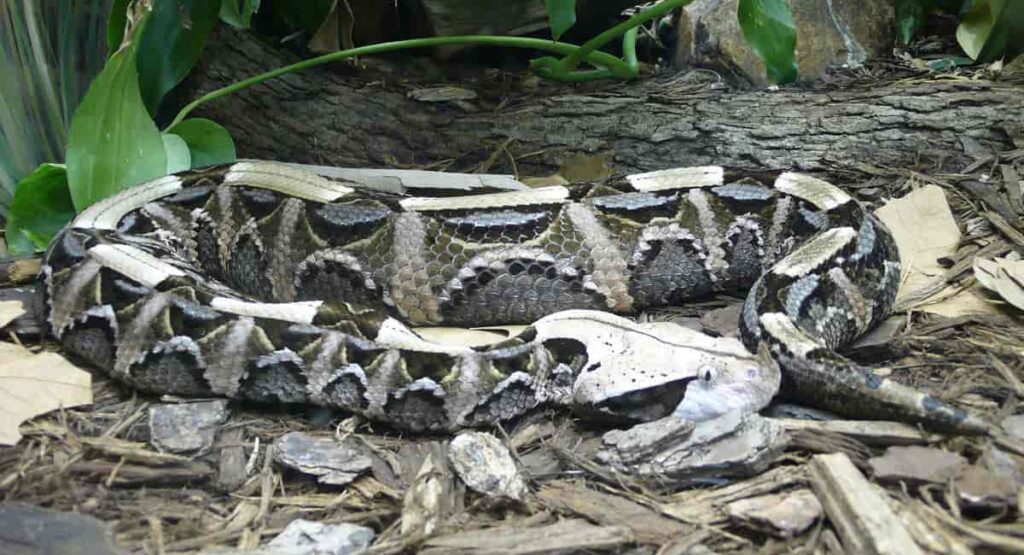
Thankfully, this species of snake almost never comes into contact with humans or bites anyone.
Attacks on humans are uncommonly documented because of the species’ penchant for isolated environments and typically peaceful demeanor.
However, when such things do happen, it is usually because someone accidentally stepped on the snake.
If anti-venom is not available, the terrible circumstance could end in death.
Unlike other vipers, this one can hang on to its victim after biting it, prolonging the opportunity to inject more poison.
The Gaboon viper, it has been claimed, is endemic to Africa. Despite this, some people in the United States keep them as pets.
Since the Gaboon viper is the largest viper in the world and so visually arresting, it is much sought after by those interested in keeping snakes as pets.
However, this option does not always end well, as was the case in Virginia in the year 2022.
There were stories of a guy being bitten by the poisonous snake he kept as a pet.
The man was rushed to Richmond Hospital’s emergency room in a desperate attempt to save his life after police were summoned to the scene.
The problem was made worse by the fact that all of the anti-venom supplied by the Smithsonian National Zoo had been used up at the VCU Medical Center.
The Virginia Aquarium and Marine Science Center in Virginia Beach, however, made a laudable effort to help by donating 35 more vials of anti-venom to the hospital.
A few months before the Virginia incident, a man was bitten by a Gaboon Viper in North Carolina, thus it seems that 2022 was a bad year for Gaboon owners in general.
The man lost numerous fingers and required 44 bottles of anti-venom.
Although there have been stories of Gaboon Vipers escaping into the wild, fortunately the likelihood of seeing this venomous snake in the United States is exceedingly rare.
The poisonous snake was perhaps spotted in Milledgeville, Georgia in 2015, according to the Georgia Department of Natural Resources.
Copy
The Reptile Report shared a video that quickly became widely circulated online in 2021. People were mesmerized by the street sighting of a Gaboon Viper because of how well it blended in with its natural environment. It even resembled a caterpillar when it moved.
The video went viral, and it’s clear to understand why: look at this beautiful animal.
The Gaboon Viper is a wonderful example of nature’s incredible diversity and adaptability because of its success in the African rainforests.
The more we learn about its mysterious history, the more we come to value the fine equilibrium of strength and beauty that characterizes the natural world.
Please SHARE this article with Family and Friends!
